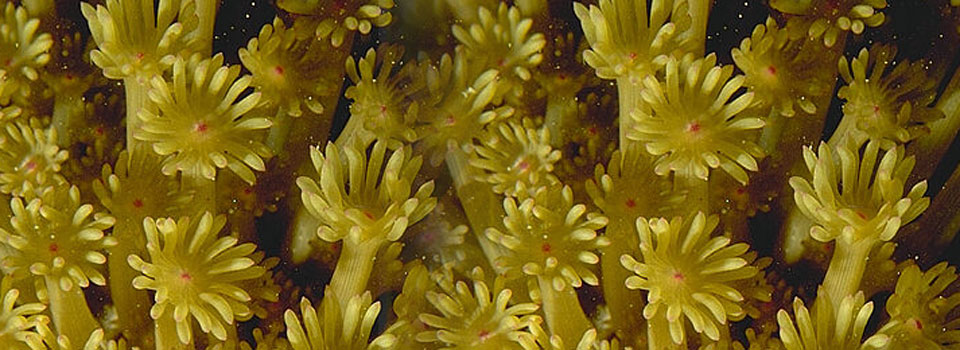All of the coral species that build the world’s spectacular and ecologically critical coral reefs are known to have unicellular algae living within them. These yellow-brown algae, called zooxanthellae, support their hosts’ survival by carrying out photosynthesis and providing nutrients that stimulate development of coral colonies. The algae also lend color to coral tissues, which otherwise are pale. Thus when corals lose their beneficial algae because of environmental stresses-from global warming, for example-and become imperiled themselves, the process is known as bleaching.
University of Georgia researchers have discovered, however, that one subtype of algae, called clade A Symbiodinium and which lives mostly in shallow-water corals of the Caribbean, exhibits resistance to certain environmental stresses. The researchers, who include plant biologists Gregory Schmidt and Brigitte Bruns and ecologists William Fitt and Jennifer McCabe Reynolds, showed for the first time that clade A Symbiodinium has mechanisms for surviving in its coral hosts during periods of warmer-than-normal water temperatures and intense late-summer sun.
They also found that deeper-water corals, by contrast, host other Symbiodinium types that are more sensitive to elevated temperatures and bright light. Thus they bleach more extensively during periods of ocean warming.
Clade A Symbiodinium’s main secret is that it has “an extraordinarily high capacity to control excess light energy by cycling electrons through atypical pathways,” said Schmidt. This enables utilization-i.e., photosynthesis-of that excess light energy when this stress has destroyed the conventional pathway.
Ph.D. candidate Jennifer McCabe Reynolds, who conducted most of the experiments, measured changes in chlorophyll fluorescence, an indicator of the excess energy reemitted from an organism, to track photosynthetic processes. She did so through “a new technique we developed, which we call serial irradiation pulses, or SIPs, that enables us to detect unusual fluorescence signal changes that reflect the presence of photoprotection mechanisms,” said Reynolds.
In the past decade, scientists have identified symbiont algae in clades-groups of organisms with a common ancestor-from A through H. In the deeper waters of the Caribbean, clades B and C are the most common coral symbionts. Because those Symbiodinium are deficient in the photoprotection mechanisms described in the new report, the researchers say this may explain why deep-water corals with non-clade A symbionts bleach more readily from the warmer-than-normal water temperatures and intense sunlight conditions, typical in late-summer Caribbean waters, than do shallow-water corals.
The team’s work was published in the September 9, 2008, issue of Proceedings of the National Academy of Sciences.
While it is tempting to conclude that corals with clade A symbionts will prevail, and protect their reefs, if ocean warming becomes more severe, Schmidt is cautious. “There are many other pressures acting on corals, including disease, pollution, and coastal development,” he said. “All must be considered in any speculation on the future of coral reef health.”
